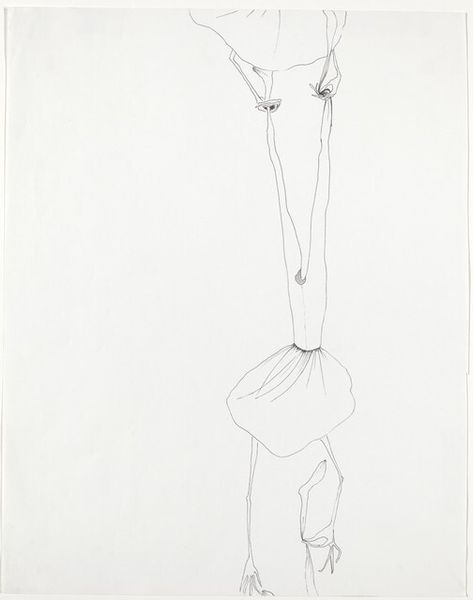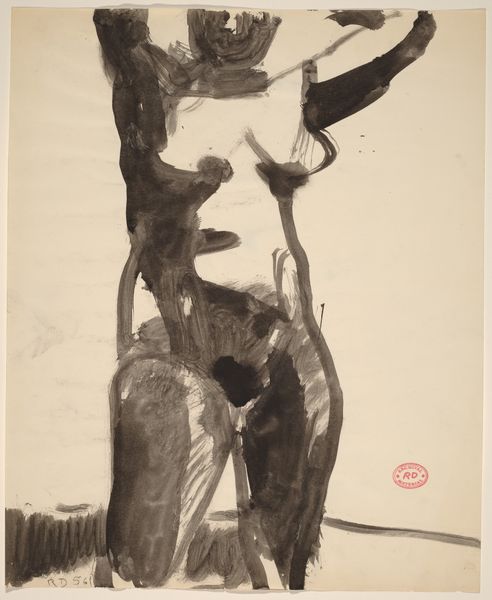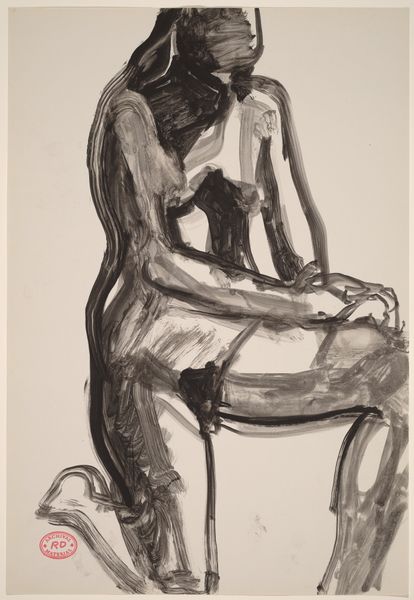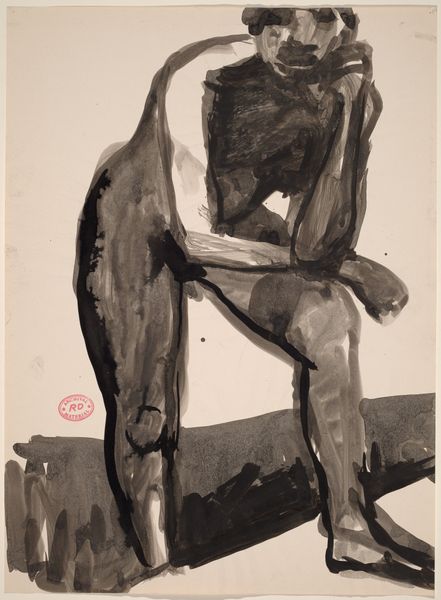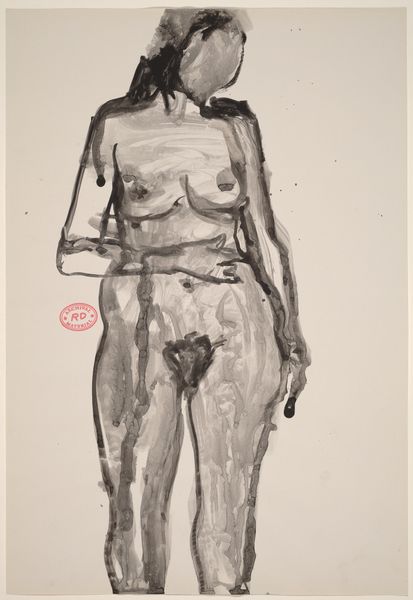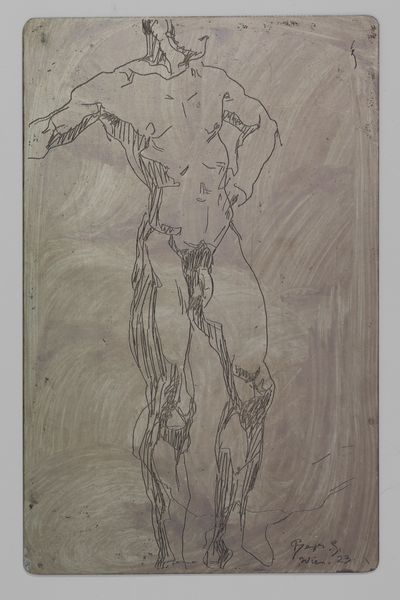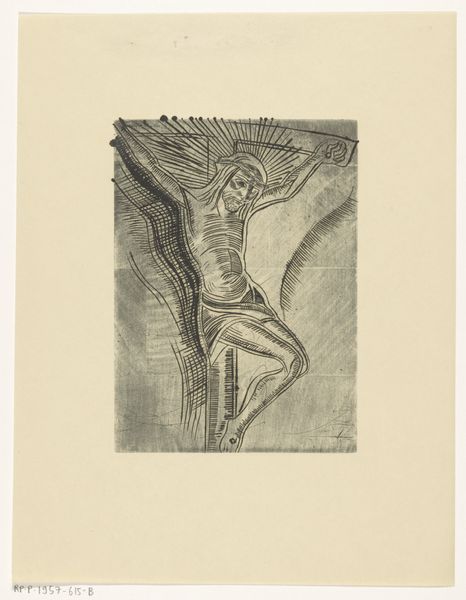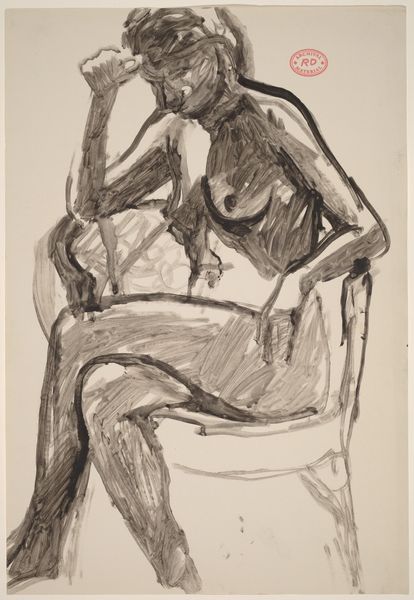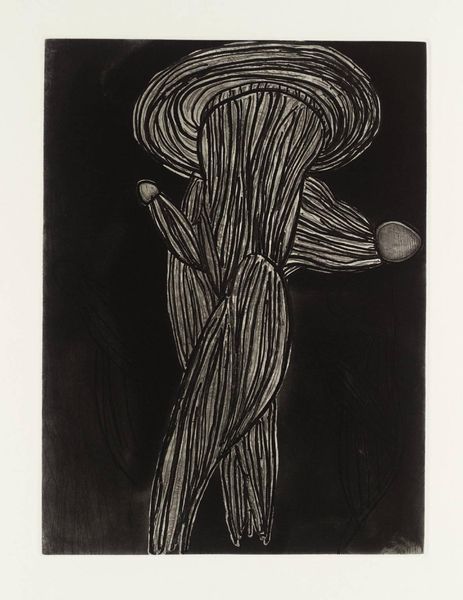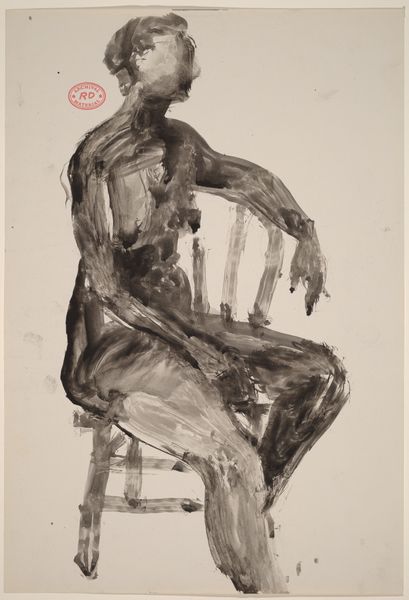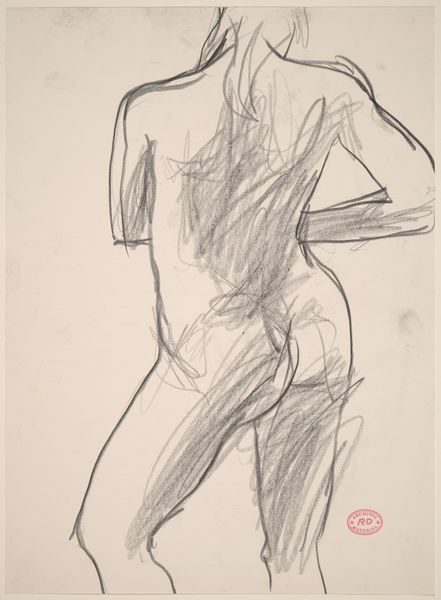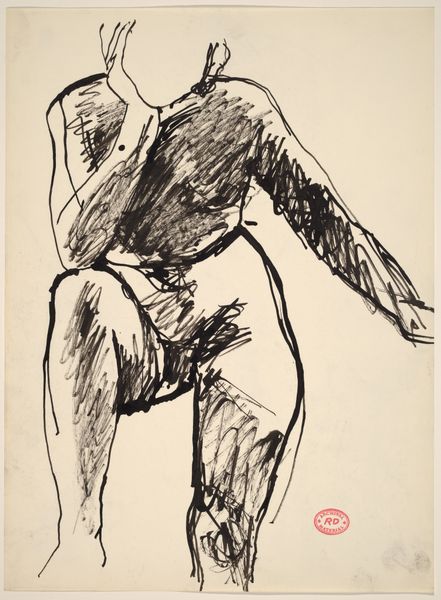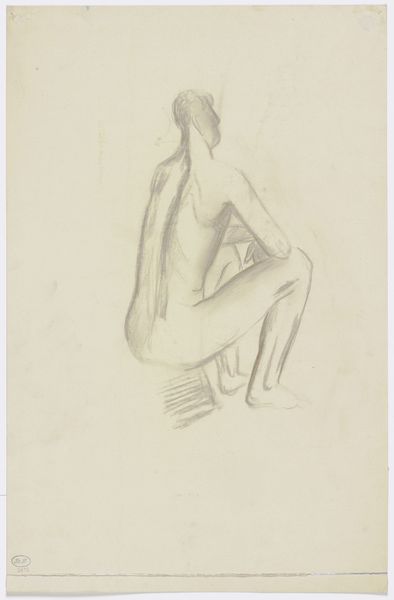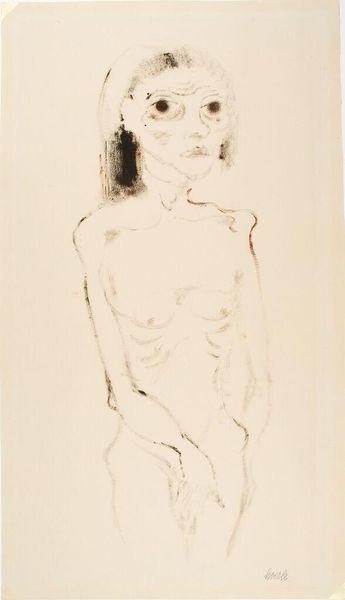
Dimensions: object: 1499 x 276 x 378 mm
Copyright: © The Estate of Alberto Giacometti (Fondation Giacometti, Paris and ADAGP, Paris), licensed in the UK by ACS and DACS, London 2014 | CC-BY-NC-ND 4.0 DEED, Photo: Tate
Curator: There’s something about Giacometti's "Walking Woman" that just pierces the soul, doesn’t it? She's all bronze and elongated limbs, like a wisp of a memory made solid. Editor: It's unsettling, really. I mean, she's impossibly thin, almost skeletal, towering yet fragile. I'm struck by how this evokes the anxieties of postwar Europe. Curator: Perhaps, but to me, it feels more elemental, a solitary figure stripped bare, walking through the vastness of existence. Giacometti wasn't just portraying the figure; he was trying to capture the very essence of being. Editor: And the museum context amplifies that feeling, doesn't it? We're meant to see her as both object and symbol, caught in a tension between artistic expression and societal critique. Curator: Exactly. It’s as if she’s walking away from something, or towards something we can't quite see, leaving us with a sense of profound loneliness and a strange sort of hope. Editor: It makes you consider the weight of the world and the burden of existing in it, even for a bronze statue. It’s a conversation starter, that’s for sure.
Comments
tate 6 months ago
⋮
http://www.tate.org.uk/art/artworks/giacometti-walking-woman-t01519
Join the conversation
Join millions of artists and users on Artera today and experience the ultimate creative platform.
tate 6 months ago
⋮
Giacometti joined the Surrealist group in 1931, when he was making disturbing and mysterious sculptures. The elongated forms of this figure echo ancient Egyptian and Greek art, but the fragmentary body is presented walking, as if encountered in a dream. At one stage, a head and feather-arms were added to the original plaster version. Giacometti removed them in recognition of the greater power of the simplified form. Gallery label, July 2008
